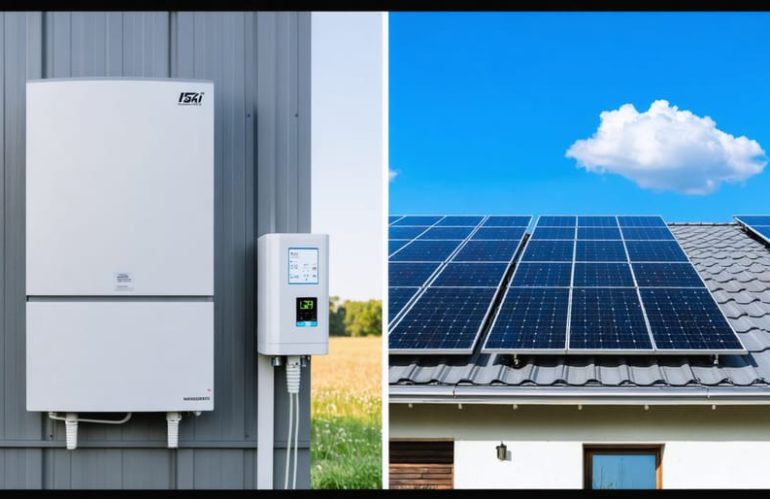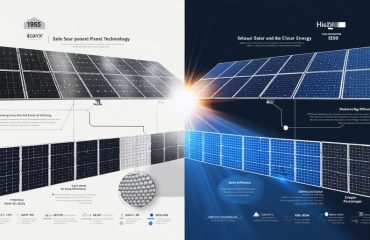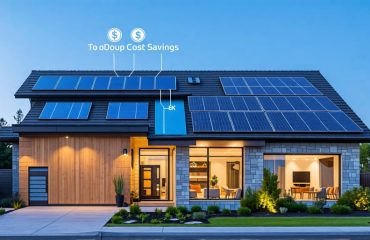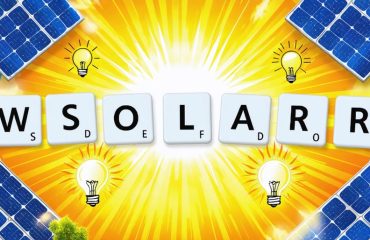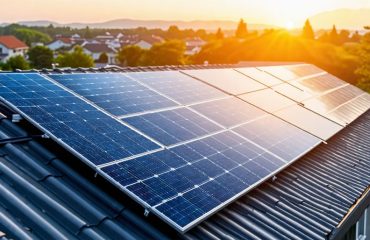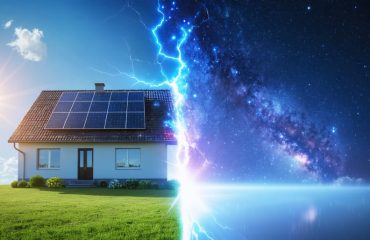When choosing the right solar system, the inverter decision can significantly impact your home’s energy efficiency and long-term savings. Micro inverters and central inverters represent two distinct approaches to converting solar energy, each offering unique advantages for different residential setups. While central inverters have traditionally dominated the market with their cost-effective single-unit design, micro inverters are revolutionizing solar installations by optimizing power production at the individual panel level. Modern homeowners increasingly face this critical choice as solar technology evolves, with factors like roof configuration, shading patterns, and budget playing pivotal roles in determining the ideal solution. Understanding the key differences between these inverter types isn’t just about technical specifications—it’s about maximizing your solar investment and ensuring reliable clean energy production for years to come.
How Solar Inverters Work: The Basics You Need to Know
Solar inverters are the unsung heroes of your solar power system, performing a crucial role that makes solar energy usable in your home. Think of them as translators that convert the DC (Direct Current) electricity generated by your solar panels into AC (Alternating Current) electricity that powers your household appliances.
When sunlight hits your solar panels, they produce DC electricity – the same type that powers flashlights and other battery-operated devices. However, your home runs on AC electricity, which is why you need an inverter to bridge this gap. Without an inverter, your solar panels wouldn’t be able to power your home effectively.
Beyond this basic conversion function, modern solar inverters are smart devices that optimize your system’s performance. They monitor how much energy your panels produce, track system efficiency, and can even alert you to potential issues before they become problems. Many of today’s inverters also include safety features that automatically shut down the system if they detect electrical problems, protecting your home and appliances.
The quality and efficiency of your inverter directly impact how much usable power your solar system produces. A good inverter typically converts about 95-98% of DC power into AC power, ensuring you get the most value from your solar investment. This is why choosing the right type of inverter is just as important as selecting your solar panels.
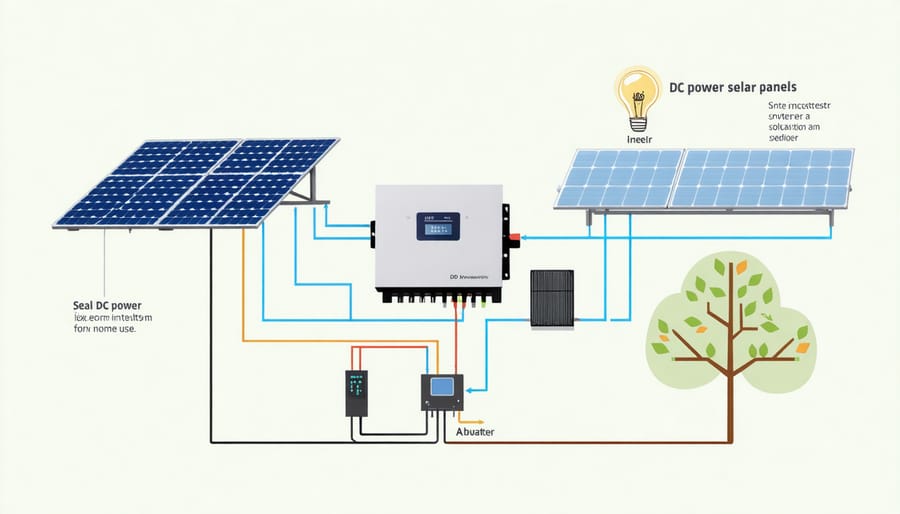
Central Inverters: The Traditional Powerhouse
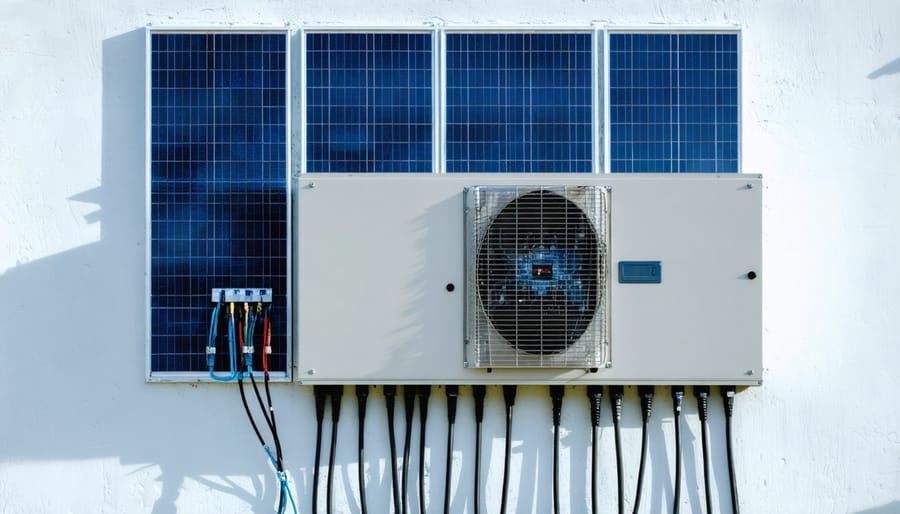
Advantages of Central Inverters
Central inverters have long been the go-to choice for solar installations, and for good reason. Their most compelling advantage is cost-effectiveness, especially for larger solar systems. When comparing price per watt, central inverters typically cost 20-30% less than microinverter solutions, making them an attractive option for budget-conscious homeowners.
Maintenance is another area where central inverters shine. With just one unit to service, routine checks and repairs are straightforward and less time-consuming. This single-point maintenance approach means lower service costs over the system’s lifetime and easier troubleshooting when issues arise.
Perhaps most reassuring is their proven track record in the solar industry. Central inverters have been the backbone of solar installations for decades, with well-documented performance data and reliability statistics. Many manufacturers offer warranties up to 12 years, demonstrating confidence in their longevity.
For homes with unshaded roof spaces and consistent sun exposure, central inverters deliver excellent performance without the added complexity of multiple components. Their robust design and high power handling capacity make them particularly suitable for larger residential installations where cost-efficiency is a priority.
Limitations to Consider
Both micro inverters and central inverters come with their own set of limitations that homeowners should consider. Central inverters, while cost-effective, have a notable drawback in their single-point-of-failure design. If the central inverter stops working, your entire solar system will shut down until repairs are made.
Shade impact varies significantly between the two types. With central inverters, shade on even a single panel can reduce the performance of the entire string of panels. Micro inverters handle shade better, but they’re not completely immune to performance losses in heavily shaded areas.
When it comes to monitoring, central inverters typically provide system-wide data but may not offer detailed panel-by-panel information. While micro inverters excel at providing detailed performance data for each panel, some systems require a stable internet connection to maintain monitoring capabilities.
Maintenance accessibility is another consideration. Central inverters are easier to service since they’re in one location, while micro inverters, mounted under each panel on the roof, can be more challenging to access when repairs are needed.
Microinverters: The Smart Solution
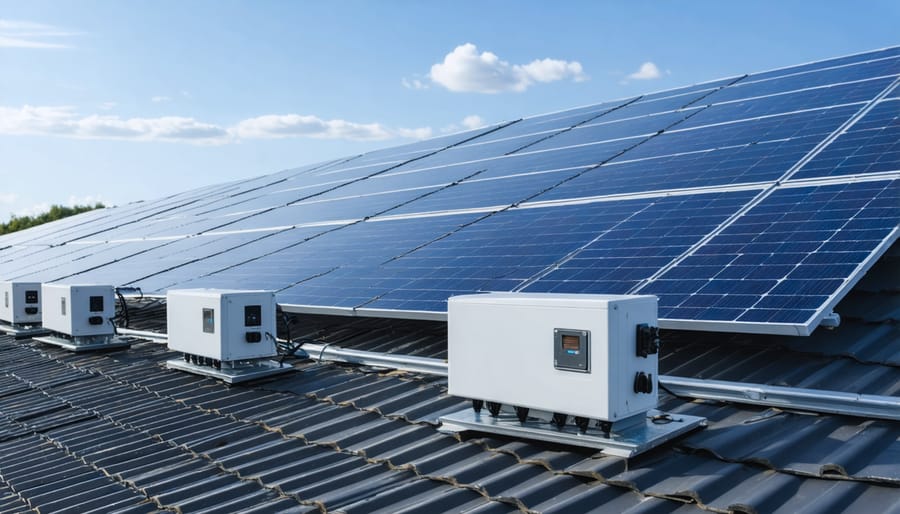
Benefits of Going Micro
Micro inverters offer several compelling advantages that make them an attractive choice for homeowners. The most significant benefit is panel-level optimization, which means each solar panel operates independently. This independence allows each panel to perform at its peak capacity, regardless of what other panels in your system are doing.
One standout feature is their superior shade tolerance. If shade falls on one panel in a traditional system, it can affect the performance of the entire array. With micro inverters, only the shaded panel’s output is reduced, while others continue working at full capacity. This makes micro inverters particularly valuable for roofs with partial shade from trees, chimneys, or nearby structures.
Another game-changing advantage is detailed monitoring capabilities. You can track the performance of each individual panel through user-friendly apps or web interfaces. This granular monitoring helps you quickly identify any issues and ensure your system is operating efficiently. It’s like having a personal energy dashboard that shows exactly how each panel contributes to your home’s power generation.
For homeowners seeking maximum energy harvest and system visibility, micro inverters deliver impressive results despite their small size.
Potential Drawbacks
While both inverter types offer great benefits, it’s important to consider potential drawbacks before making your decision. Micro inverters typically come with a higher upfront cost compared to central inverters, which might impact your initial budget planning. On average, a micro inverter system can cost 20-30% more than a central inverter setup for the same solar array size.
Accessibility for repairs is another factor to consider. Since micro inverters are installed under each panel on your roof, maintenance or replacement may require more extensive rooftop work. This can result in higher service costs and potentially longer repair times. Central inverters, being ground-mounted, are generally easier to access and service.
However, these considerations should be weighed against long-term benefits. While micro inverters may cost more initially, their panel-level optimization and longer warranty periods (typically 25 years compared to 10-15 years for central inverters) can provide better value over time. Additionally, their modular nature means you only need to replace individual units if problems arise, rather than the entire system.
Making the Right Choice for Your Home
Choosing between micro inverters and central inverters depends on several key factors unique to your situation. First, consider your roof’s configuration and potential shading issues. If your roof has multiple angles or experiences partial shading, micro inverters typically offer better performance by allowing each panel to operate independently.
Your budget plays a crucial role in the decision-making process. While solar panel installation costs are generally higher with micro inverters initially, they often provide better long-term value through increased energy production and easier maintenance.
Think about your energy goals and future plans. If you’re starting small but plan to expand your solar system later, micro inverters offer easier scalability. Central inverters, while more cost-effective for larger initial installations, may require complete replacement when adding more panels.
Roof accessibility is another important consideration. Central inverters need regular maintenance, so ensure you have convenient access to the installation location. Micro inverters, mounted under each panel, require less frequent maintenance but may be more challenging to access when repairs are needed.
To find the best value for your home, evaluate your energy consumption patterns. If you consistently use power throughout the day, micro inverters’ higher efficiency might justify the additional upfront cost. For homes with simpler roof configurations and minimal shading, a central inverter could be the more cost-effective choice while still delivering reliable performance.
When choosing between micro inverters and central inverters for your solar system, both options offer distinct advantages. Micro inverters excel in shaded conditions, provide detailed panel-level monitoring, and offer enhanced system reliability through their distributed architecture. They’re particularly suitable for complex roof layouts and homes with partial shading issues. Central inverters, on the other hand, remain a cost-effective choice for larger installations with consistent sun exposure and simple roof configurations.
Consider your specific needs: if maximum energy harvest and system monitoring are priorities, micro inverters might be your best bet. If initial cost and simple maintenance are more important, a central inverter could be the way to go. Remember to factor in your roof’s layout, local weather patterns, and long-term maintenance expectations when making your decision.
We recommend consulting with several qualified solar installers who can assess your specific situation and provide customized recommendations. They can help you analyze the cost-benefit ratio for your unique circumstances and ensure you make the most informed choice for your solar investment.

